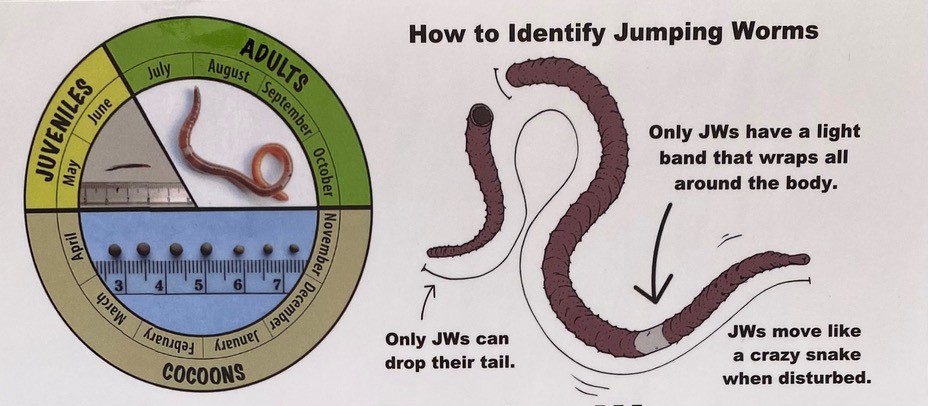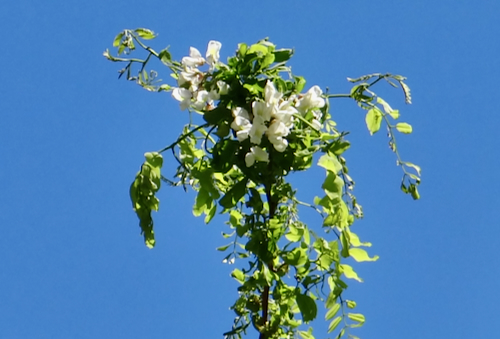By Barbara Peat

This species, with the interesting name, has been much in the news lately - but what are they and why are they drawing attention?
Jumping worms are a non-native species, as are all earthworms, but in contrast to other earthworms, this species causes much more damage to the environment, spreads much more rapidly, and is very abundant.
Jumping worms live in the top few centimetres of soil, and as they feast on humus and fine root hairs, they strip vital nutrients from the topsoil, harming or killing existing plants, and in fields and forests leaving the area open to erosion.
There are a few clues that we can put together in order to distinguish this worm from the common earthworm. First, the soil will have a distinctive loose, crumbly texture, which may be one centimetre deep or several. The worms are usually in this ‘cast’ soil and when disturbed will thrash around. This is not a continuous movement - they do calm down. The worms themselves have a shiny grey/grey-brown body and a clitellum ( a light coloured band near the worm’s head) that goes all the way around their body.
Jumping worms are ‘annuals’, killed by winter cold but unfortunately the eggs and cocoons survive until the following spring. As the eggs are about the size of a poppy seed they are almost impossible to find and eliminate. However, by fall these eggs have become adult worms and their castings are much more obvious. So NOW (August, September) is a very good time to be aware and alert to finding this species.
There is no known control of jumping worms but there are a couple of different ways of getting rid of these worms if any are found. Temperature extremes will kill the worms. Place them in plastic bags and leave them in the sun or place them in a freezer. Also dropping them in alcohol will kill them instantly.
There are, also, a couple of things we can do to slow the spread of this invasive pest. Be aware of accepting plants, soil, and mulch into your garden, especially if from an area that is known to have an infestation. If or when you do acquire a new plant, shake the soil off the roots into a container, then rinse the roots clean in a bucket. Before being discarded, the water used for rinsing should be strained through finely-woven cotton to catch the eggs. Finally, solarize the soil and muddy cotton at a temperature of 40C for three days to kill the eggs.
Early detection and monitoring are very helpful in learning more about this species. It was a gardener who first reported the presence of these worms in Ontario. Any sightings should be reported to Invasive Species Centre (invasivespeciescentre.ca) or EDDMaps (eddmaps.org), along with any pictures or videos that you have.
“It’s always worth trying to limit the spread of invasive species. When you’re at the start of a species establishing itself, that’s when you need to act. So I think now would be the time.”
—Etienne Normandin, entomologist, University of Montreal
For more information these sites have good details on jumping worms.
Master Gardeners of Ontario - mgoi.ca
Halton Master Gardeners - haltonmastergardeners.com
Royal Botanical Garden - rbg.ca
RBG also has an excellent video - https://youtube.com/watch?v=Sh09RcANN3s&feature=share9


